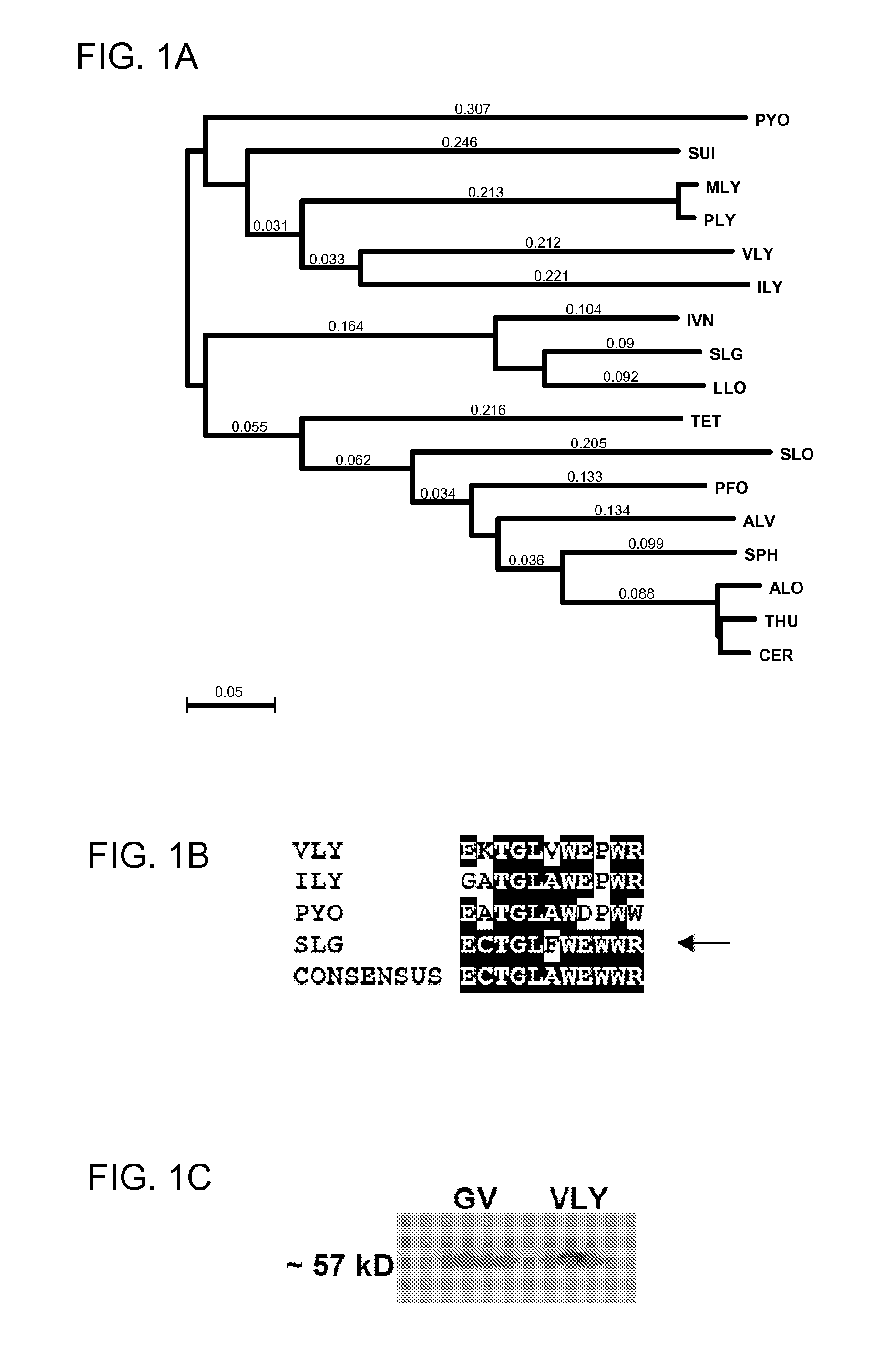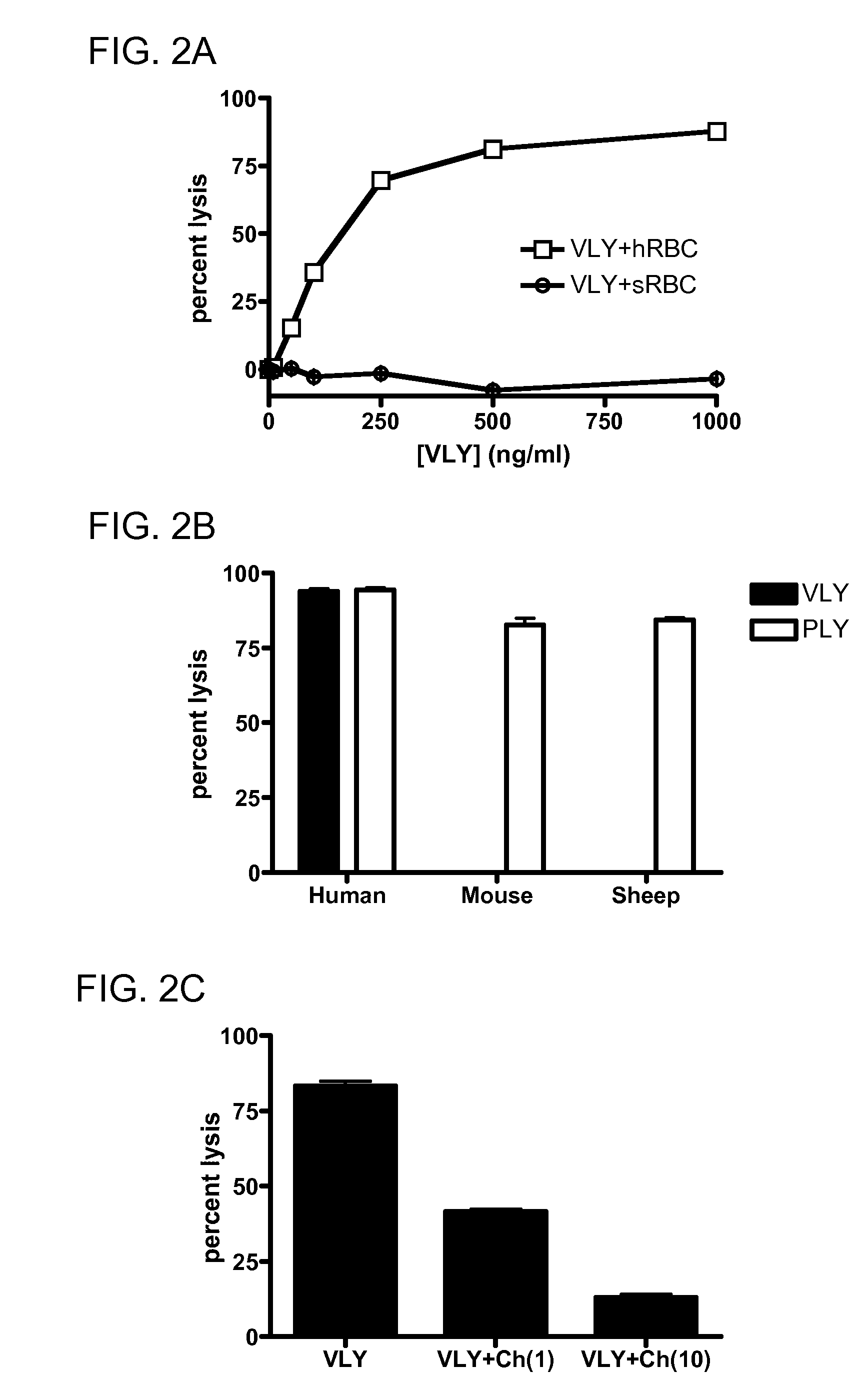Treatment and prevention of gardnerella vaginalis infections
- Summary
- Abstract
- Description
- Claims
- Application Information
AI Technical Summary
Benefits of technology
Problems solved by technology
Method used
Image
Examples
example 1
Materials and Methods
Bacterial Strains and Cell Lines
[0152]Gardnerella vaginalis strains 14018, 14019, and 49145 were obtained from ATCC. ARG3 is a clinical isolate of G. vaginalis kindly provided by Susan Whittier. Cells were grown in brain-heart infusion supplemented with 5% fetal bovine serum, 0.3% Tween 80, and 0.1% soluble starch or in 10% fetal bovine serum (HyClone), 5% Fildes enrichment (Remel) and 4 ng / ml of amphotericin. There are many efficient ways to culture Gardnerella vaginalis known in the art. Cultures were typically incubated at 37° C. and 5% CO2. E. coli strains TOP10 and BL21AI (Invitrogen) were grown in LB, with kanamycin (30 μg / ml) selection as appropriate. HeLa cells were grown at 37° C. / 5% CO2 in MEM supplemented with 10% fetal bovine serum and 10 μg / ml ciprofloxacin. CHO-K1 cells (CCL-61) were grown at 37° C. / 5% CO2 in F12 Kaighn's Modification (Invitrogen) with 10% FBS and 10 μg / ml ciprofloxacin.
[0153]Human cervical endothelial cells (HeLa, ATCC CCL-2) were...
example 2
Domain 4 of VLY Plays a Role in Species Specificity
[0172]Consistent with these findings, the hCD59 binding site has been localized to this domain for ILY (22) and for VLY (FIG. 8 renumber). Using overlap-extension PCR, we generated a toxin chimera, containing domains 1-3 of VLY and domain 4 of PLY, a species non-selective CDC (FIG. 8A). Unlike the parent VLY, the chimera lysed human and non-human erythrocytes with equal efficacy (FIG. 8B), and does not require hCD59 for CHO cell lysis (FIG. 8C). This indicates that D4 plays a major role in species-selectivity among the CDCs. In order to generate a probe for toxin-hCD59 interactions, we created a GFP:VLYD4 fusion protein (FIG. 8D). This protein binds to hCD59-expressing human epithelial cells but does not form pores (FIG. 8E). Thus, this protein will be an invaluable tool for studies delineating requirements for binding between D4 and hCD59.
PUM
| Property | Measurement | Unit |
|---|---|---|
| Immunogenicity | aaaaa | aaaaa |
Abstract
Description
Claims
Application Information
 Login to View More
Login to View More - R&D
- Intellectual Property
- Life Sciences
- Materials
- Tech Scout
- Unparalleled Data Quality
- Higher Quality Content
- 60% Fewer Hallucinations
Browse by: Latest US Patents, China's latest patents, Technical Efficacy Thesaurus, Application Domain, Technology Topic, Popular Technical Reports.
© 2025 PatSnap. All rights reserved.Legal|Privacy policy|Modern Slavery Act Transparency Statement|Sitemap|About US| Contact US: help@patsnap.com



